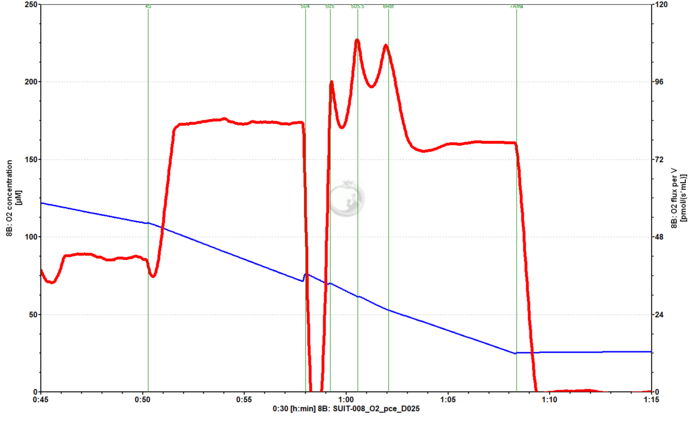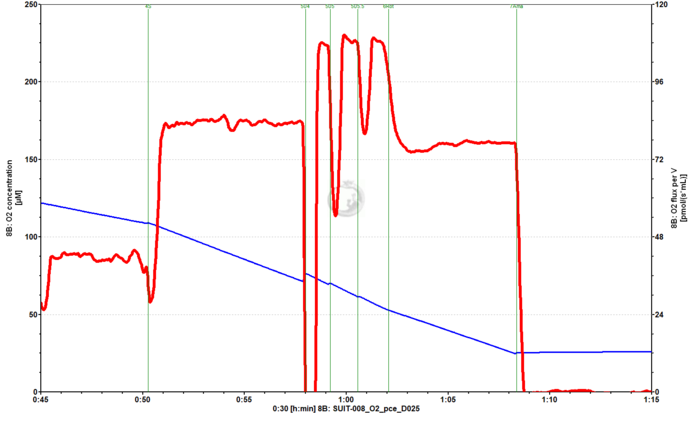Template:Smoothing: Difference between revisions
From Bioblast
(Created page with "::* Recommendation: Set "Slope smoothing" to 20 for performing and analyzing experiments with biological sample (strongly recommended in the case of uncoupler titrations). A s...") |
No edit summary |
||
| Line 1: | Line 1: | ||
* Recommendation: Set "Slope smoothing" to 20 for performing and analyzing experiments with biological sample (strongly recommended in the case of uncoupler titrations). A slope smoothing of 20 increases the time or wavelength [[resolution]], but increases the [[noise]] of the signal. | |||
:The following DatLab traces illustrate an example of "Slope smoothing" using 20 versus 40 data points: | |||
[[File:Slope smoothing 40.png|700px|thumb|left|Slope smoothing 40]] | [[File:Slope smoothing 40.png|700px|thumb|left|Slope smoothing 40]] | ||
[[File:Slope smoothing 20.png|700px|thumb|left|Slope smoothing 20]] | [[File:Slope smoothing 20.png|700px|thumb|left|Slope smoothing 20]] | ||
Revision as of 11:31, 13 March 2019
- Recommendation: Set "Slope smoothing" to 20 for performing and analyzing experiments with biological sample (strongly recommended in the case of uncoupler titrations). A slope smoothing of 20 increases the time or wavelength resolution, but increases the noise of the signal.
- The following DatLab traces illustrate an example of "Slope smoothing" using 20 versus 40 data points:

